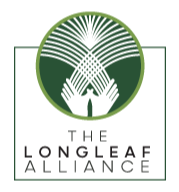Videos and Webinars
Below you can find conservation and working lands videos and webinars developed by our partners. These webinars are meant for a wide range of audiences — from technical experts and practitioners to landowners and the public.
Stream Impacts from Water Withdrawals in the Marcellus Shale Region
The Appalachian LCC provided a grant to Cornell University Environmental Engineers to study how the region’s surface freshwater supply – and the health of natural systems delivering this resource – have been impacted and may be altered in the coming years under increasing water withdrawals.
Assessing Vulnerability of Species and Habitats to Large-scale Impacts
New vulnerability assessments for 41 species and 3 habitats in the Appalachians are now available. The conservation community can view and search each of these assessments by vulnerability scores, conservation status ranks, state and subregion of assessment, and higher taxonomy. In addition, principle investigators NatureServe compiled the results of 700 species assessments previously completed by other researchers as well as assessments on several habitats.
Classification and Mapping of Cave and Karst Resources
Cave and karst systems are unique environments that occur throughout the Appalachians. They provide habitat for a diverse array of species and are an important source of domestic water supply for Appalachian communities. However, a lack of classification and mapping information on these ecosystems creates a significant barrier to conservation. In order to develop and deliver landscape-level planning tools, it is essential to develop an Appalachian-wide map depicting where cave and karst habitats and resources occur across the landscape. Researchers from an array of organizations were funded by the LCC to develop a series of deliverables, including data tables, geospatial information layers, and maps on these ecosystems.
Riparian Restoration Decision Support Tool
An innovative riparian planting and restoration decision support tool is now available to the conservation community. This user-friendly tool allows managers and decision-makers to rapidly identify and prioritize areas along the banks of rivers, streams, and lakes for restoration, making these ecosystems more resilient to disturbance and future changes in climate. It will also help the conservation community invest limited conservation dollars wisely, helping to deliver sustainable resources.
Stream Classification System for the Appalachian Landscape Conservation Cooperative
Stream classification information is essential to develop and implement flow standards and water management recommendations that will sustain aquatic biodiversity. Unfortunately, standardized information was lacking for the Appalachian landscape. The goal of this project was to develop a state-based, consistent stream classification system for aquatic ecosystems in the region. Unifying state-based stream classifications into a single consistent system, principal investigators at The Nature Conservancy developed a hierarchical classification system and map for stream and river systems for the Appalachian LCC that represents the region’s natural flowing aquatic habitats.
Energy Forecast Mapping Tool Tutorial
This video presentation by Judy Dunscomb, Senior Conservation Scientist at The Nature Conservancy, provides a detailed overview of how to use the Energy Forecast Mapping Tool.
Assessing Future Energy Development
Assessing Future Energy Development across the Appalachian LCC uses models that combine data on energy development trends and identifies where these may intersect with important natural resource and ecosystem services to give a more comprehensive picture of what potential energy development could look like in the Appalachians. A web-based mapping tool allows policy makers, land management agencies, industries, and others to see where development may likely occur and intersect with important natural values to inform regional landscape planning decisions. Ultimately this information is intended to support dialogue and conservation on how to effectively avoid, minimize, and offset impacts from energy development to important natural areas and the valuable services they provide.
Climate Change's Growing Threat to Public Lands
Secretary Jewell attended the 2014 World Parks Congress in Australia, where she stressed the need for international cooperation on public lands and the growing threat of climate change.
Data Needs Assessment Research Update
This presentation from Dr. Robert Baldwin of Clemson University provides an update to the Steering Committee on the Appalachian LCC funded research project. The Data Needs Assessment project is evaluating existing spatial data, assembling public data in geodatabase, defining conservation planning tasks that can be accomplished, identifying problems to address if data gaps are filled, interpreting uses of data, and conducting analysis of ongoing planning efforts.
Climate Webinar: Exploring Snowfall in the United States
The number of snowfall events in a given area has a large impact on road maintenance and water resources management. Snowfall data collected in the United States between 1930 and 2007 at seven locations shows how snowfall frequency has changed over time, and relates the information to a changing global climate.
Science Applications: Fostering Science Excellence for the Service
This video answers two questions: 1. What does the Science Applications program work on and; 2. Why is it important to the public and the staff of the U.S. Fish and Wildlife Service.
GIS & Conservation Planning Portal Overview
Dr. Paul Leonard provides a general overview of the GIS & Conservation Planning section within the Appalachian LCC Web Portal.
NJ Landscape Project Training and Information Sessions
Designed to guide strategic wildlife habitat conservation, the Landscape Project is an interactive ecosystem-based mapping tool that assists government agencies, planners, conservation groups, the public and others in making decisions that will protect imperiled and special concern wildlife.
Conservation Planning Process
Conservation planning identifies and prioritizes lands that encompass important natural or cultural resources across the landscape (e.g., critical watersheds, habitat for rare or threatened species) and develops protection and management strategies for these lands. It is a process where science is at the core of planning, but the science is informed by groups of stakeholders using their on-the-ground knowledge and expertise. Dr. Robert Baldwin of Clemson University explains in this video the steps involved in the conservation planning process.
Planning for Growth and Open Space Conservation Webinar Series
In 2012, we embarked on a project to help inform natural resource professionals, land use planners, private landowners and others about the issues facing our forestlands – both public and private – and to help them learn about opportunities and strategies to conserve open space through a series of monthly webinars. Below is the archive of these webinars. We hope you find them interesting!
Habitat Assessment Models and Decision Support Tools for Aquatic Habitats
Fritz Boettner of Downstream Strategies presents on the North Atlantic LCC funded project to develop a decision support tool for an aquatic assessment of the Northeast. The presentation focuses on the development of a modeling methodology, process and outputs that came out of the modeling, and how stakeholders are needed for the project to be a success and develop quality assessment outputs.
Conservation Planning
Conservation planning identifies and prioritizes lands that encompass important natural or cultural resources across the landscape (e.g., critical watersheds, habitat for rare or threatened species) and develops protection and management strategies for these lands. It is a process where science is at the core of planning, but the science is informed by groups of stakeholders using their on-the-ground knowledge and expertise.
South Atlantic LCC Natural Resource Indicator Process
Rua Mordecia, Science Coordinator with the South Atlantic LCC, provide an overview of the process the South Atlantic LCC took to identify Natural Resource Indicators.
Assessing Regional Connectivity in Current and Future Landscapes
Connectivity among conservation reserves has long been recognized as necessary for long-term persistence of populations and continued evolution in anthropogenically-dominated landscapes.
What stakeholders need to know about the relationships between water resources and climate change
Christine Hatch speaks at UMass Amherst as part of the Northeast Climate Science Center Colloquium on November 28th, 2012.

























